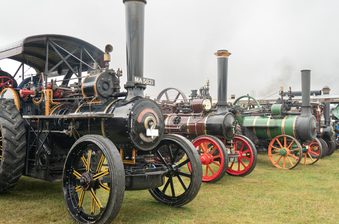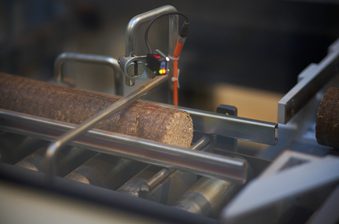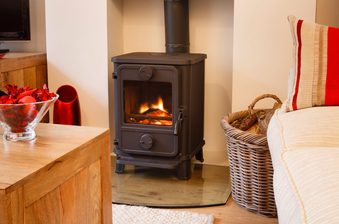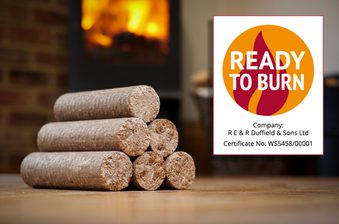Wood briquettes and traditional firewood — what’s hot and what’s not? Our team has done the tests, and here are the results...
Wood briquettes offer numerous advantages over traditional firewood. Firstly, due to their consistent shape and size, they're undeniably more convenient.
What's more, they're cleaner. When burned, they kick up less smoke and produce less ash.
That's not all: they're more cost-effective than traditional logs.
But, do briquettes pack more heat than a traditional wood log?
Yes. After 2 hours 30 minutes of burn time, tests reveal that briquettes burn 62°C hotter on average compared to regular logs (92°C vs 30°C).
In a nutshell, briquettes not only reach a higher temperature, but they maintain this heat for longer.
The full heat test results: wood briquettes vs regular logs
Over the course of three days, we carried out three tests on briquettes and traditional wood logs, with each test lasting two and a half hours.
Before each test, the wood burner was cleared of ash, set with a hotbox firestarter and two Lava Logs® (each broken into two pieces) for the briquette test; and four wood logs (of a similar weight) for the log test. See images below.
A wood stove thermometer was fixed to the door of the burner to allow us to take a reading every thirty minutes.
Wood burner settings
Due to the consistent burn of wood briquettes, the vents on the wood burner were left open for the first thirty minutes, closed for one and a half hours and then opened again for the final thirty minutes.
Unfortunately, the same approach couldn't be used with the wood logs and greater care had to be taken to ensure the logs burnt at the optimum level.
Briquettes vs. logs heat comparison: the results
See the temperature readings below (shown in degrees celsius (°C)):
Briquettes | ||||
Time (HH:MM) | Test 1 | Test 2 | Test 3 | Average |
00:00 | 0 | 0 | 0 | 0 |
00:30 | 50 | 40 | 100 | 63 |
01:00 | 210 | 170 | 220 | 200 |
01:30 | 180 | 210 | 200 | 197 |
02:00 | 125 | 120 | 150 | 132 |
02:30 | 70 | 105 | 100 | 92 |
Logs | ||||
Time (HH:MM) | Test 1 | Test 2 | Test 3 | Average |
00:00 | 0 | 0 | 0 | 0 |
00:30 | 45 | 100 | 45 | 63 |
01:00 | 140 | 170 | 100 | 137 |
01:30 | 90 | 130 | 70 | 97 |
02:00 | 50 | 60 | 50 | 53 |
02:30 | 20 | 30 | 40 | 30 |
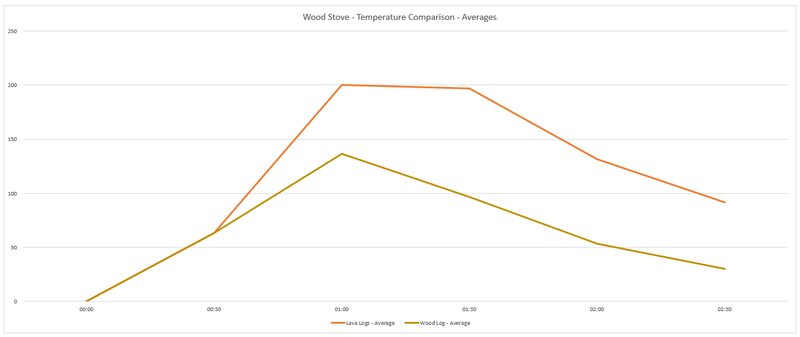
Highest recorded temperature
- Briquettes: 220
- Traditional wood: 170
Highest average temperature held over 30 minutes
- Briquettes: 198
- Traditional wood: 117
Highest average temperature held over 60 minutes
- Briquettes: 176
- Traditional wood: 99
Average temperature at 2 hours 30 minutes burn time
- Briquettes: 92
- Traditional wood: 30
The air temperature outside on each of the three test days was as follows:
- Day 1: -2.5
- Day 2: 4.0
- Day 3: 6.0
So, there we have it – not only are briquettes more cost effective than logs, but they burn considerably hotter!
Lava Logs: high-performance, sustainable heating for your home
As the name suggests and the experiment above shows, each Lava Log kicks out some excellent long-lived heat.
They are available to buy through our e-commerce store in three pack sizes to suit your needs, with free UK-wide delivery and collection available.




